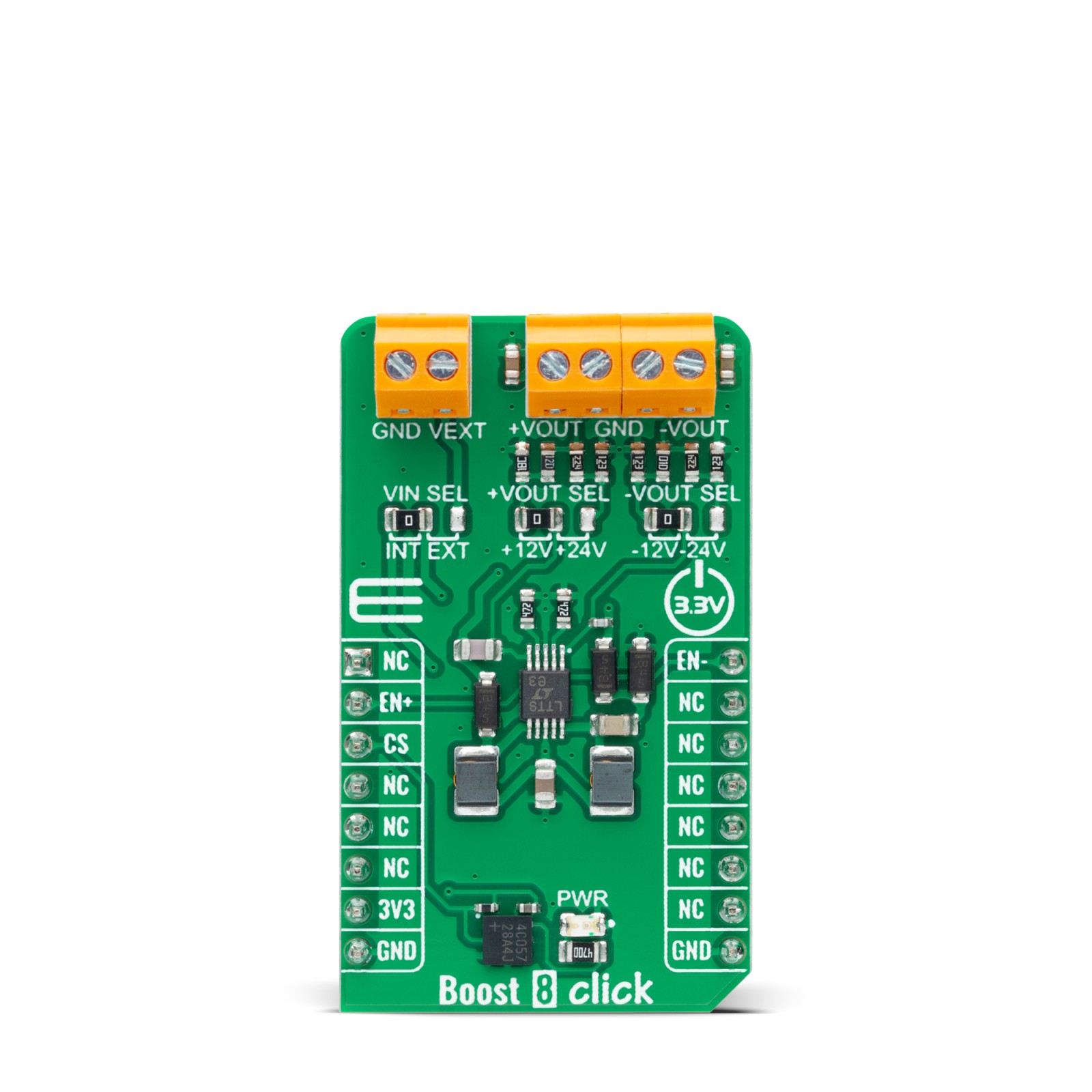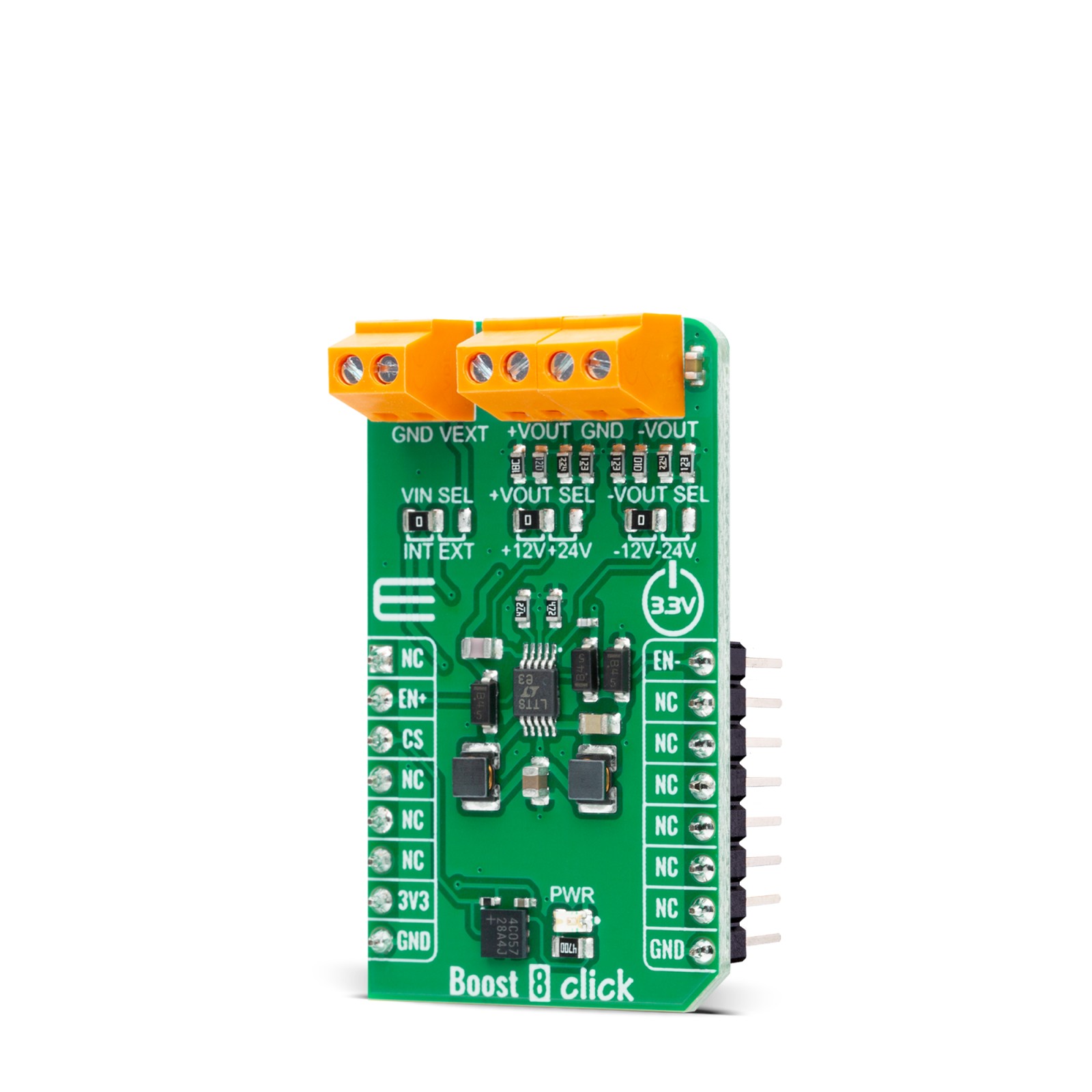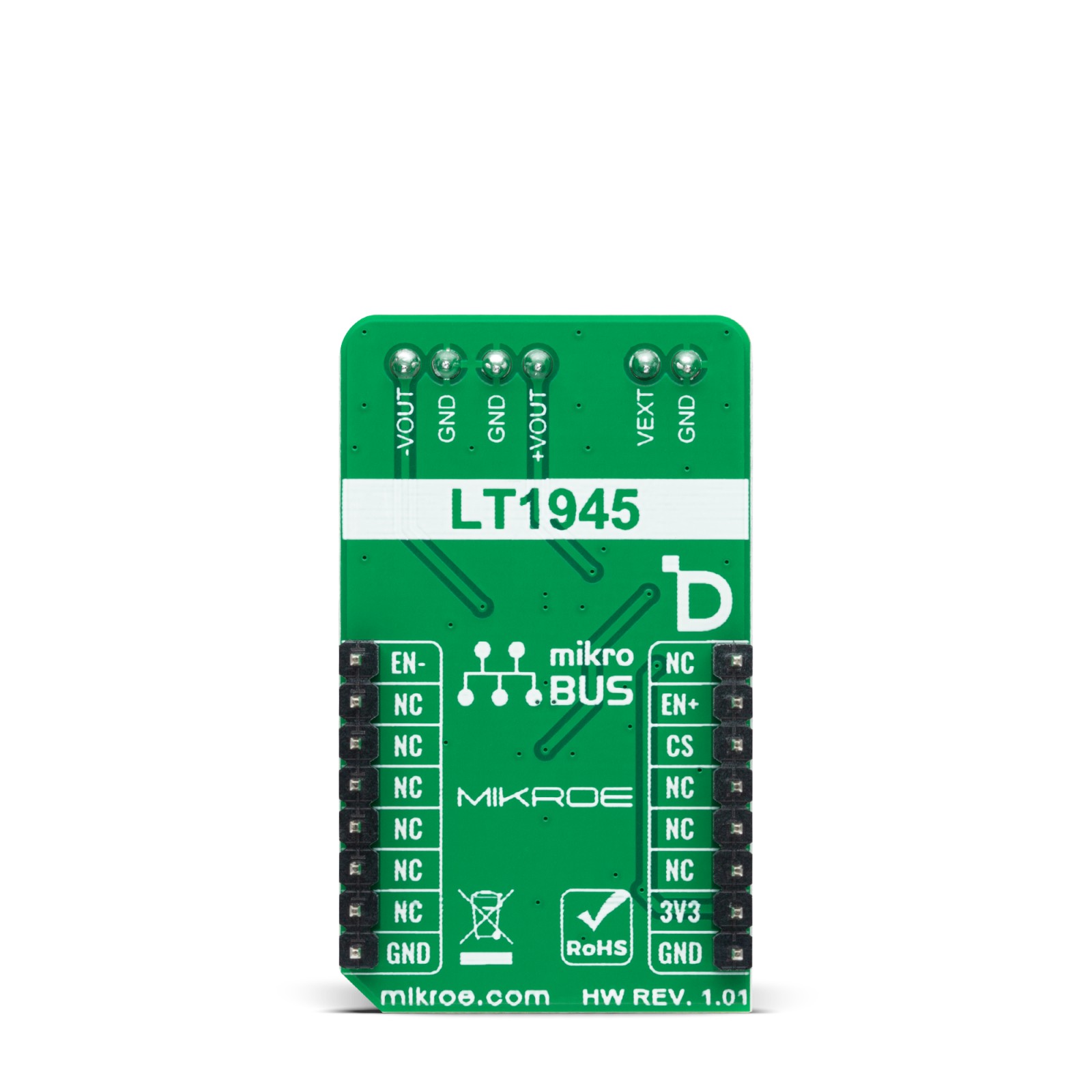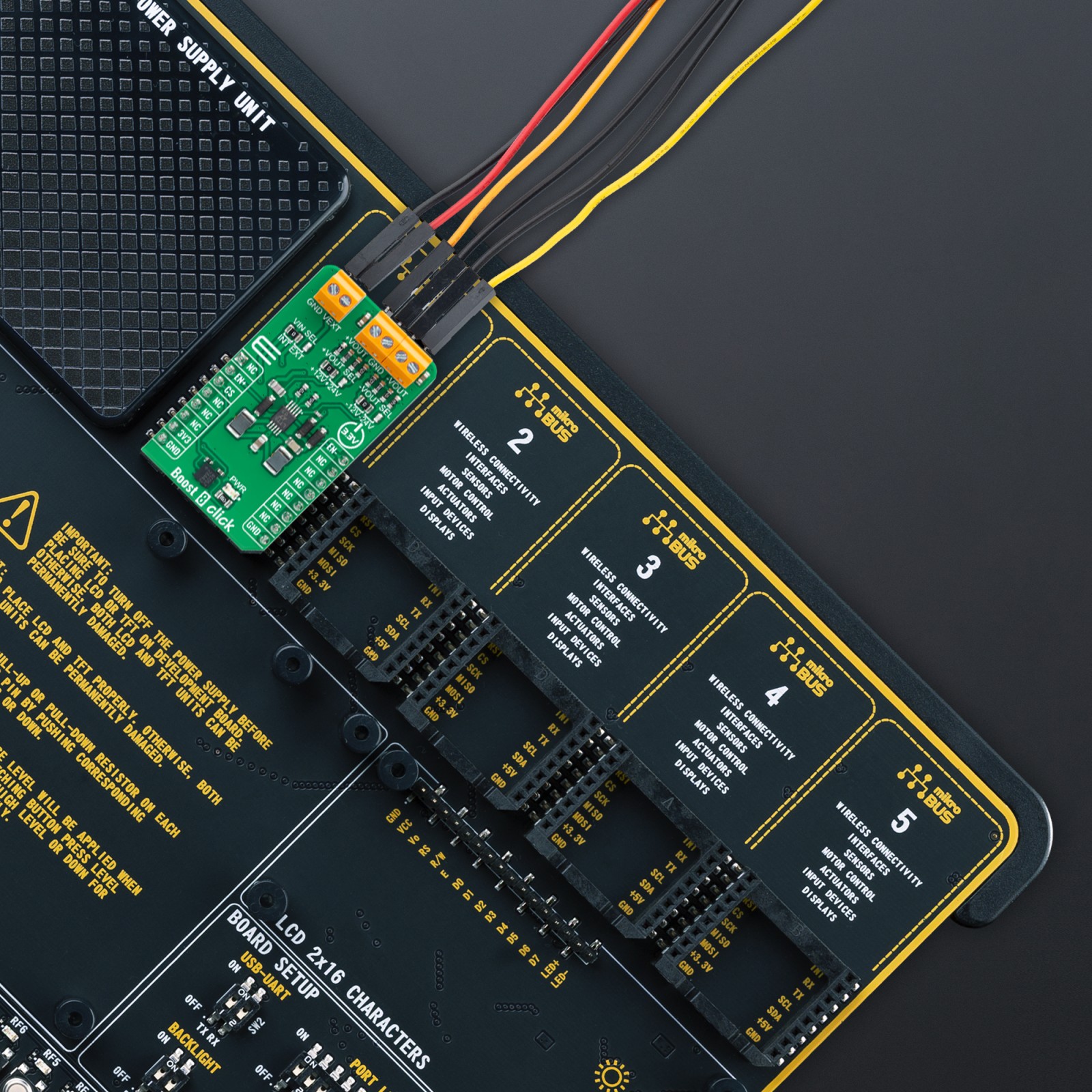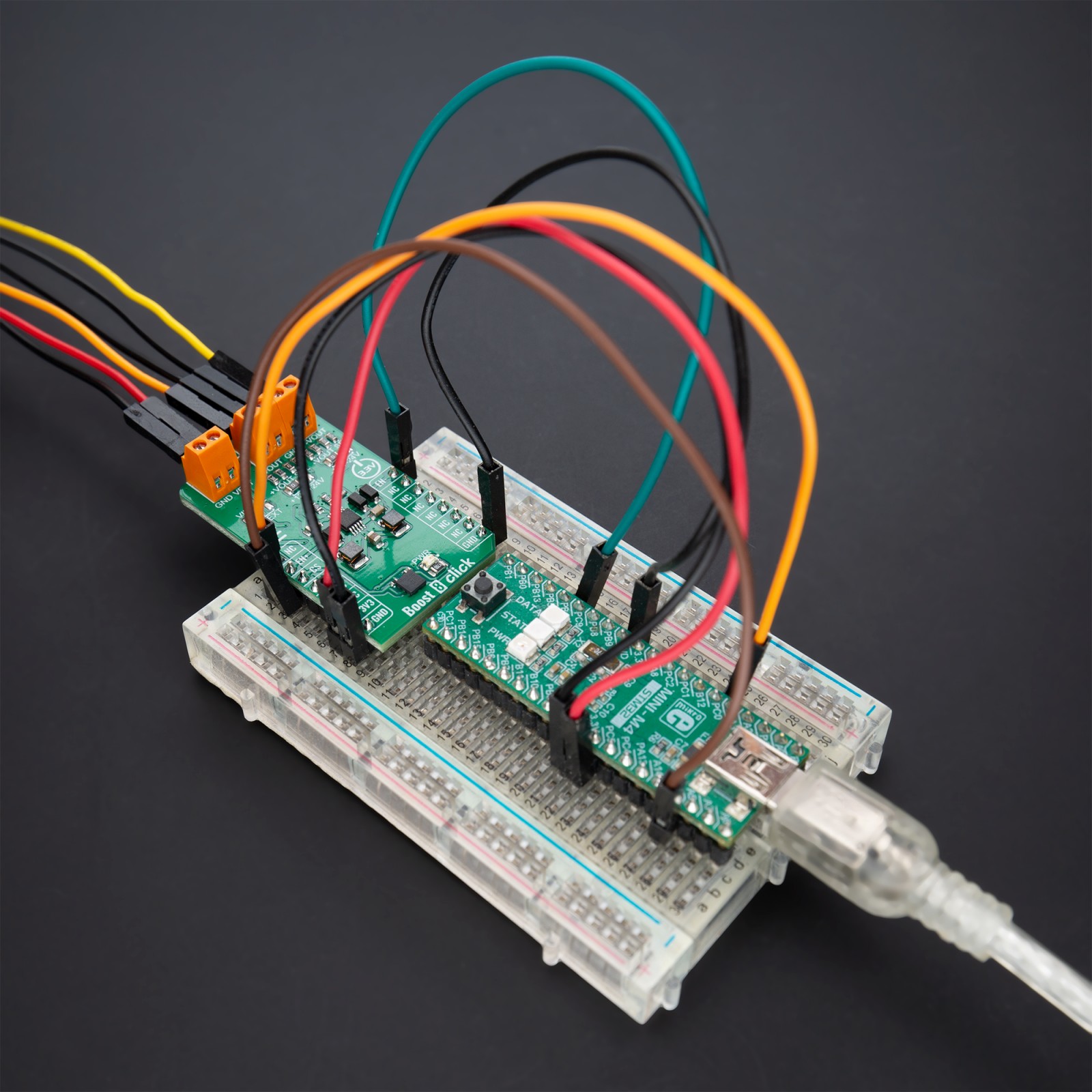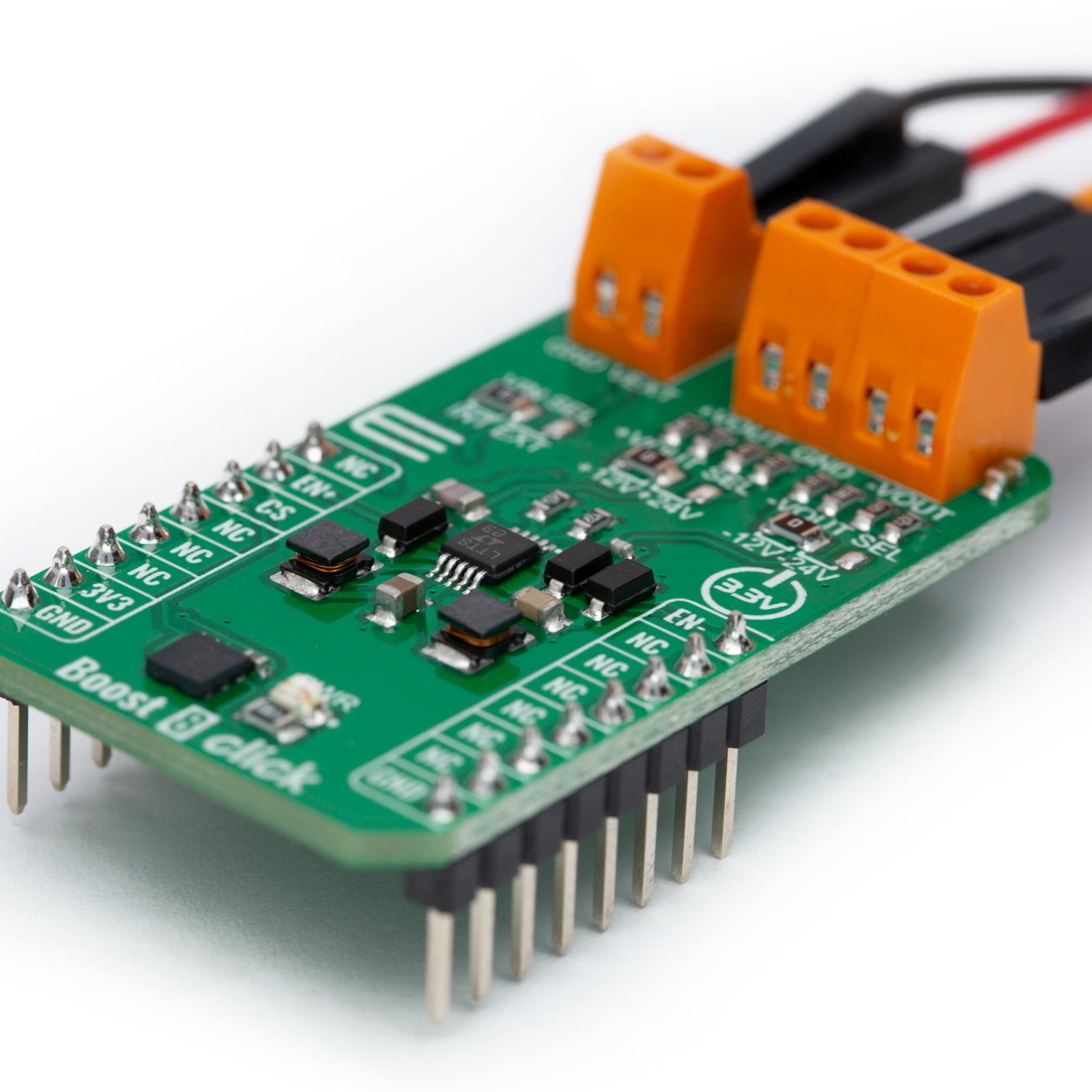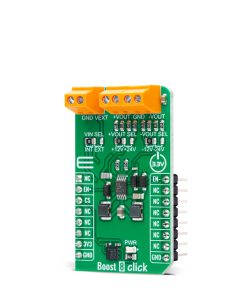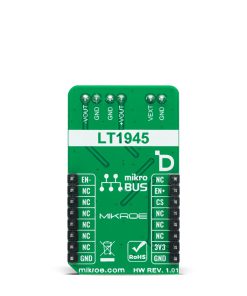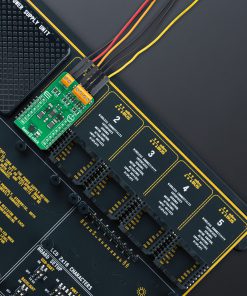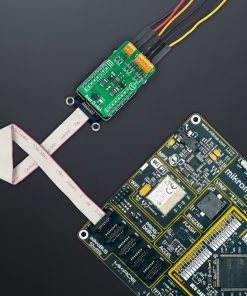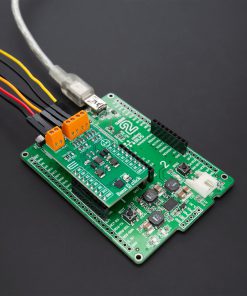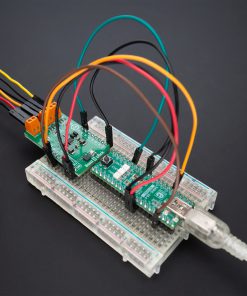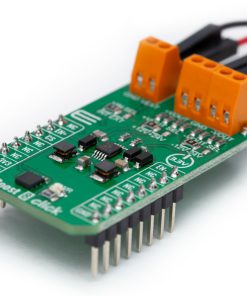Boost 8 Click
R460.00 ex. VAT
Boost 8 Click is a compact add-on board that steps up the voltage from its input (supply) to its output (load). This board features the LT1945, a dual micropower DC/DC converter from Analog Devices. Each converter inside the LT1945 is designed with a 350mA current limit generating well-regulated positive and negative outputs of ±12V or ±24V, making the LT1945 ideal for various applications. In addition to the possibility of working with a 3.3V mikroBUS™ power rail, it also provides the opportunity of using an external power supply with a very low voltage of 2.7V. A current-limited, fixed-off-time control scheme conserves operating current, resulting in high efficiency over a broad range of load current. This Click board™ is used to step up an input voltage to some higher level, required by a load, for various applications that require “split rail” operating voltages.
Boost 8 Click is fully compatible with the mikroBUS™ socket and can be used on any host system supporting the mikroBUS™ standard. It comes with the mikroSDK open-source libraries, offering unparalleled flexibility for evaluation and customization. What sets this Click board™ apart is the groundbreaking ClickID feature, enabling your host system to seamlessly and automatically detect and identify this add-on board.
Stock: Lead-time applicable.
| 5+ | R437.00 |
| 10+ | R414.00 |
| 15+ | R391.00 |
| 20+ | R376.28 |

